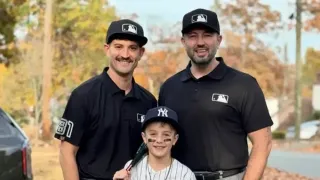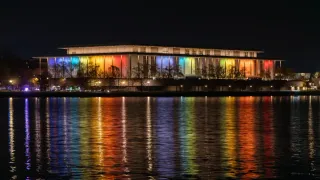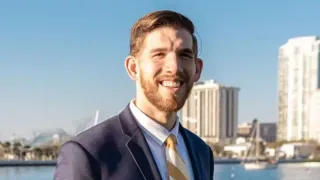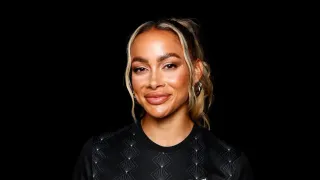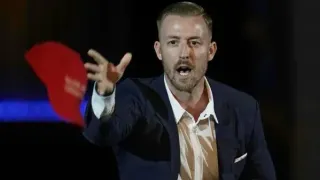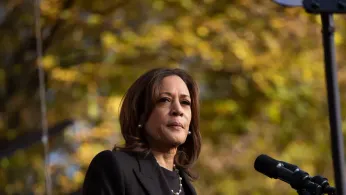
Nov 2
Kamala Harris and the Joe Rogan “What If”: Why Queer Visibility in Unexpected Spaces Still Matters
READ TIME: 3 MIN.
Political campaigns are often about moments seized and moments missed, but Kamala Harris’s recent confession—that skipping Joe Rogan’s podcast was a campaign regret—hits differently in today’s media landscape. In her new book, Harris reveals that she was “very excited to do the interview,” but logistics and internal doubts got in the way. “Even though most of my team thought doing the interview at all was a gamble, and to be sure it was a gamble, and others bluntly argued it was a bad idea, I really wanted to do it,” Harris writes, emphasizing that one podcast wouldn’t win or lose the election, but Rogan’s “young and male” audience could have broadened her reach .
For queer audiences, this isn’t just a story about missed campaign tactics—it’s about the ongoing struggle for visibility in spaces that aren’t always built with LGBTQ+ voices in mind. Rogan’s podcast, with its massive, often contrarian listenership, represents a media frontier where few openly queer or queer-affirming politicians have dared to tread. Harris’s regret isn’t just personal; it’s political, and it’s deeply relevant to anyone who’s ever wished for more representation in mainstream conversations.
Why should LGBTQ+ folks care where Harris (or any politician) chooses to show up? Because every media appearance by a high-profile leader is a chance to shift narratives, challenge biases, and maybe—just maybe—spark real conversation around queer issues. The Joe Rogan Experience, for all its controversies, is a cultural juggernaut. It’s where millions of listeners tune in for unfiltered, sprawling dialogues that can veer from comedy to conspiracy to—occasionally—genuine moments of empathy.
Harris’s willingness to engage with Rogan’s audience, despite her team’s reservations, signals an understanding: “I wanted to reach those guys who might not otherwise hear from me” . For trans, non-binary, and queer youth who may feel alienated by traditional political messaging, visibility on platforms like Rogan’s isn’t just symbolic—it’s strategic. It’s about meeting people where they are, even if “where they are” is a three-hour podcast famous for its wild tangents and messy debates.
Of course, showing up in spaces that aren’t always friendly—or even informed—about LGBTQ+ lives is risky. Harris’s team reportedly saw the Rogan invite as a “gamble,” and there’s a lesson here for every out-and-proud public figure: entering unscripted, sometimes hostile environments can expose ignorance, invite tough questions, and challenge your ability to speak authentically. As The Young Turks’ Ana Kasparian put it, “You cannot hide your ignorance or your incompetence or your failings in a three-hour long conversation. And that’s what Joe Rogan’s podcast is. Who you really are ends up coming out” .
But for LGBTQ+ communities, risk has always been part of the visibility equation. From Stonewall to social media, queer people have often had to weigh the dangers of being seen against the rewards of changing hearts and minds. Harris’s regret is a reminder: it’s not just about winning debates or scoring soundbites—it’s about showing up, even when the space feels uncertain.
The drama around Harris and Rogan also exposes a deeper media truth: not all platforms are equally welcoming, and some are shaped by voices that can feel exclusionary or outright hostile to marginalized groups. Rogan himself has faced criticism for platforming transphobic and homophobic views, sometimes without adequate pushback . For LGBTQ+ listeners, the hope is that a figure like Harris might challenge those narratives, or at least offer a counternarrative rooted in empathy and inclusion.
But Harris never made it to the studio. Joe Rogan later clarified that the campaign “never agreed to do the show,” refuting claims that logistics or scheduling were the only barriers . The result? A missed chance for an unfiltered conversation that could have reached across the political divide—and, crucially, into the earbuds of listeners who rarely hear from queer-affirming leaders.
If there’s a lesson in Harris’s campaign “what if,” it’s that visibility in unlikely places is still a frontier for LGBTQ+ advocacy. Whether it’s a politician on a podcast, a drag queen on daytime TV, or a nonbinary activist in a viral TikTok, showing up matters. It’s not always comfortable, and it’s rarely simple—but it’s how change happens.
For queer audiences, Harris’s regret is familiar. How many times have we hesitated to enter spaces that weren’t designed for us, only to realize that our presence might have shifted the conversation? As campaigns gear up for another election cycle, the question isn’t just “Where will candidates show up?”—it’s “Who will they be brave enough to reach?”
In 2025, as podcasts continue to shape political discourse, the queer community knows all too well that representation isn’t just about being seen—it’s about being heard, in all the rooms (and recording studios) where futures are imagined.
